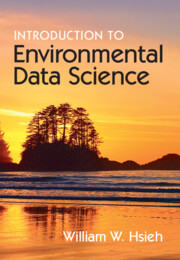Refine search
Actions for selected content:
2327 results in Pattern Recognition and Machine Learning
Subject Index
-
- Book:
- Mathematical Analysis of Machine Learning Algorithms
- Published online:
- 20 July 2023
- Print publication:
- 10 August 2023, pp 447-454
-
- Chapter
- Export citation
Appendix A - Basics of Convex Analysis
-
- Book:
- Mathematical Analysis of Machine Learning Algorithms
- Published online:
- 20 July 2023
- Print publication:
- 10 August 2023, pp 414-419
-
- Chapter
- Export citation
Frontmatter
-
- Book:
- Mathematical Analysis of Machine Learning Algorithms
- Published online:
- 20 July 2023
- Print publication:
- 10 August 2023, pp i-iv
-
- Chapter
- Export citation
11 - Analysis of Neural Networks
-
- Book:
- Mathematical Analysis of Machine Learning Algorithms
- Published online:
- 20 July 2023
- Print publication:
- 10 August 2023, pp 218-245
-
- Chapter
- Export citation
13 - Probability Inequalities for Sequential Random Variables
-
- Book:
- Mathematical Analysis of Machine Learning Algorithms
- Published online:
- 20 July 2023
- Print publication:
- 10 August 2023, pp 267-288
-
- Chapter
- Export citation
4 - Empirical Covering Number Analysis and Symmetrization
-
- Book:
- Mathematical Analysis of Machine Learning Algorithms
- Published online:
- 20 July 2023
- Print publication:
- 10 August 2023, pp 49-67
-
- Chapter
- Export citation

Mathematical Analysis of Machine Learning Algorithms
-
- Published online:
- 20 July 2023
- Print publication:
- 10 August 2023

Introduction to Environmental Data Science
-
- Published online:
- 23 March 2023
- Print publication:
- 23 March 2023
17 - Merging of Machine Learning and Physics
-
- Book:
- Introduction to Environmental Data Science
- Published online:
- 23 March 2023
- Print publication:
- 23 March 2023, pp 549-568
-
- Chapter
- Export citation
8 - Learning and Generalization
-
- Book:
- Introduction to Environmental Data Science
- Published online:
- 23 March 2023
- Print publication:
- 23 March 2023, pp 245-282
-
- Chapter
- Export citation
13 - Kernel Methods
-
- Book:
- Introduction to Environmental Data Science
- Published online:
- 23 March 2023
- Print publication:
- 23 March 2023, pp 440-472
-
- Chapter
- Export citation
10 - Unsupervised Learning
-
- Book:
- Introduction to Environmental Data Science
- Published online:
- 23 March 2023
- Print publication:
- 23 March 2023, pp 330-371
-
- Chapter
- Export citation
15 - Deep Learning
-
- Book:
- Introduction to Environmental Data Science
- Published online:
- 23 March 2023
- Print publication:
- 23 March 2023, pp 494-517
-
- Chapter
- Export citation
9 - Principal Components and Canonical Correlation
-
- Book:
- Introduction to Environmental Data Science
- Published online:
- 23 March 2023
- Print publication:
- 23 March 2023, pp 283-329
-
- Chapter
- Export citation
16 - Forecast Verification and Post-processing
-
- Book:
- Introduction to Environmental Data Science
- Published online:
- 23 March 2023
- Print publication:
- 23 March 2023, pp 518-548
-
- Chapter
- Export citation
Index
-
- Book:
- Introduction to Environmental Data Science
- Published online:
- 23 March 2023
- Print publication:
- 23 March 2023, pp 613-628
-
- Chapter
- Export citation
References
-
- Book:
- Introduction to Environmental Data Science
- Published online:
- 23 March 2023
- Print publication:
- 23 March 2023, pp 573-612
-
- Chapter
- Export citation
7 - Non-linear Optimization
-
- Book:
- Introduction to Environmental Data Science
- Published online:
- 23 March 2023
- Print publication:
- 23 March 2023, pp 216-244
-
- Chapter
- Export citation
12 - Classification
-
- Book:
- Introduction to Environmental Data Science
- Published online:
- 23 March 2023
- Print publication:
- 23 March 2023, pp 418-439
-
- Chapter
- Export citation
14 - Decision Trees, Random Forests and Boosting
-
- Book:
- Introduction to Environmental Data Science
- Published online:
- 23 March 2023
- Print publication:
- 23 March 2023, pp 473-493
-
- Chapter
- Export citation
